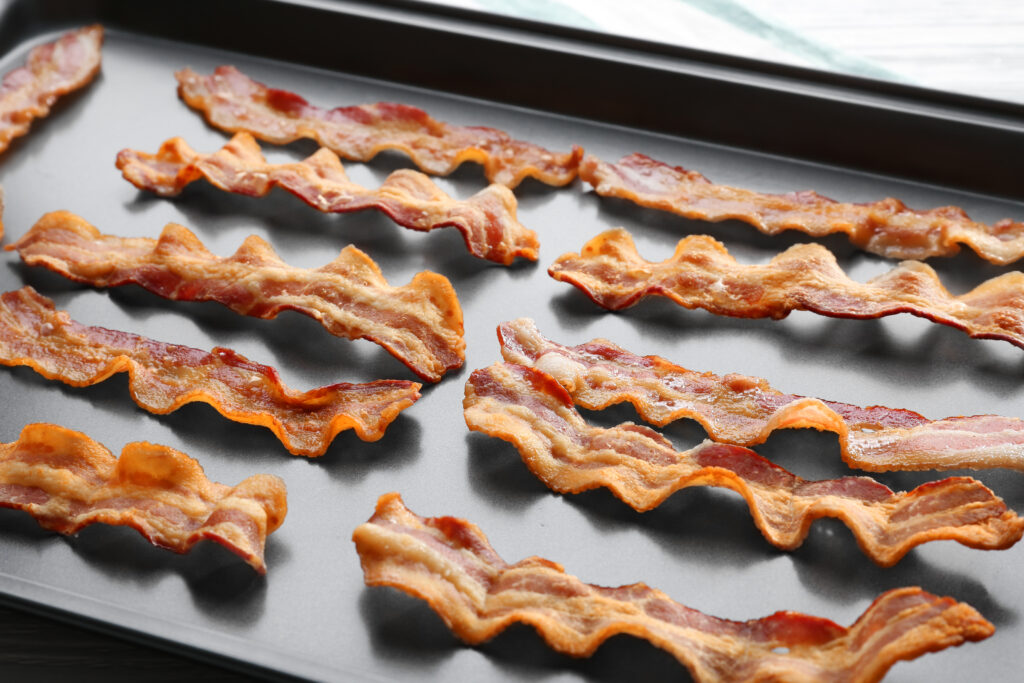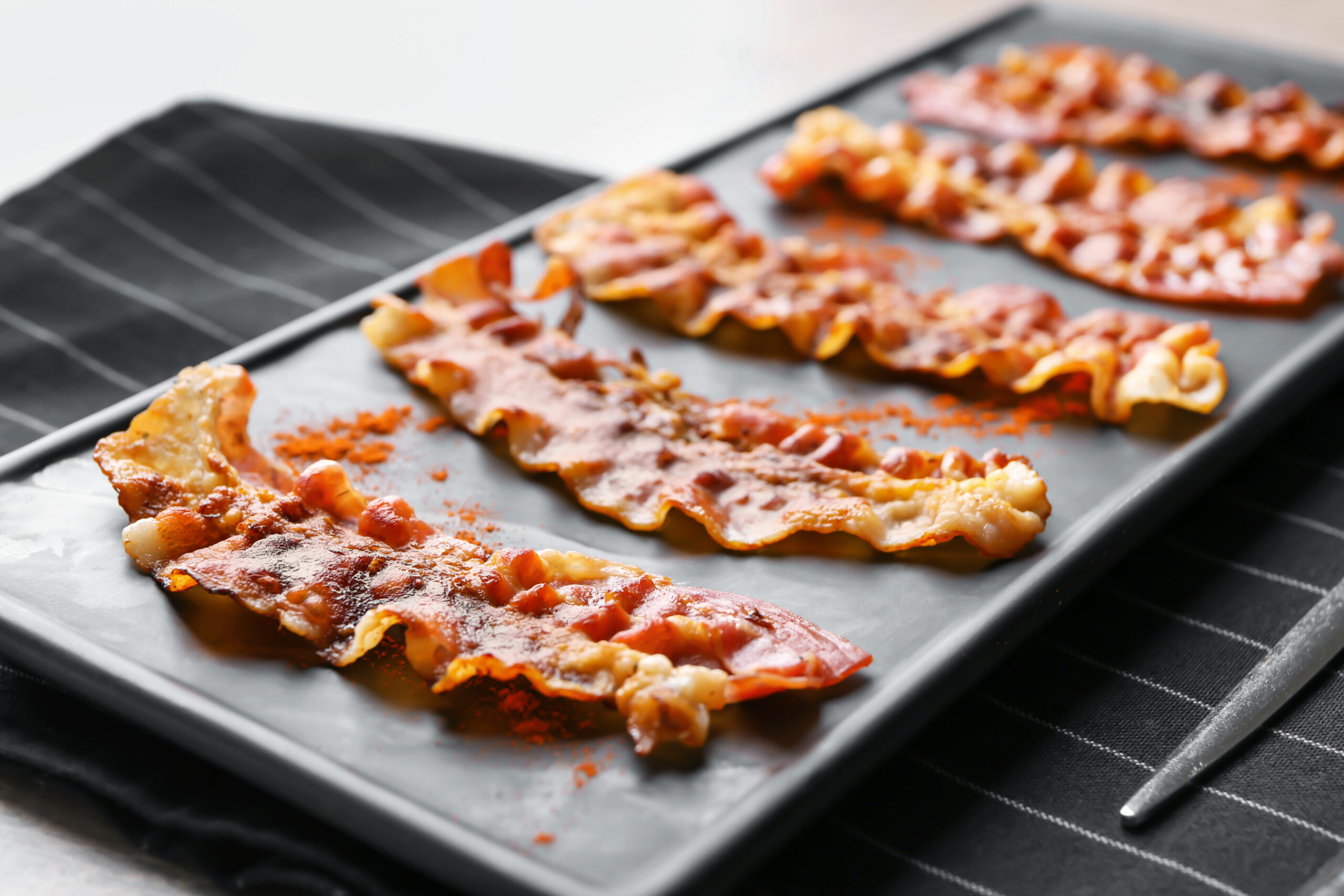Cooking bacon in the oven has gained popularity for good reason. This method not only produces perfectly crispy bacon but also allows you to prepare larger quantities with minimal mess. Whether you’re preparing breakfast for a crowd or simply want to enjoy a few slices without the splatter of frying, oven-cooked bacon offers an efficient and delicious solution. In this article, we will explore the superior qualities of oven-cooked bacon, how to choose the right type of bacon, and provide an easy step-by-step guide to achieving that perfect crispiness.
Understanding Why Oven-Cooked Bacon is Superior
Oven-cooked bacon is often regarded as the superior method for several compelling reasons. First, cooking bacon in the oven ensures even heat distribution, which results in uniformly crisp slices. Unlike frying, where some pieces may cook faster than others due to uneven heat, the baking process allows for consistent cooking throughout.
Additionally, when you cook bacon in the oven, the grease drips away from the meat, resulting in a less greasy final product. This is particularly beneficial if you are trying to enjoy bacon as a flavorful addition to dishes without overwhelming your meal with excess fat. Furthermore, the oven method frees up your stovetop for other cooking tasks, making it a practical choice when preparing a full breakfast or brunch spread.
Choosing the Right Type of Bacon for Oven Cooking
The type of bacon you choose can significantly affect the outcome of your oven-cooked results. There are several varieties of bacon available, each bringing its own unique flavor and texture. Here are the most common types to consider:
- Regular Bacon: This is the most common type, made from pork belly, and offers a rich, smoky flavor. It typically has a good balance of meat and fat, making it ideal for oven cooking.
- Thick-Cut Bacon: For those who prefer a meatier bite, thick-cut bacon is an excellent choice. It takes slightly longer to cook but delivers a satisfying texture and flavor.
- Turkey Bacon: A leaner alternative, turkey bacon is lower in fat and calories. While it won’t crisp up in the same way as pork bacon, it can still be delicious when cooked in the oven.
- Center-Cut Bacon: This type has less fat compared to regular bacon, making it a healthier option while still providing a good flavor.
- Maple or Flavored Bacon: For a twist on the classic, consider flavored varieties. Maple bacon or those seasoned with spices can add a unique taste to your dishes.
When selecting bacon, consider how you plan to use it. For breakfast, regular or thick-cut bacon might be preferable, while flavored options can enhance salads or burgers. Regardless of your choice, ensure you select high-quality bacon for the best flavor.
Step-by-Step Guide to Cooking Bacon in the Oven

Cooking bacon in the oven is straightforward and requires minimal preparation. Follow these steps for perfectly crispy bacon:
- Preheat your oven: Begin by preheating your oven to 400°F (204°C). This temperature is ideal for achieving crispy bacon without burning.
- Prepare your baking sheet: Line a large baking sheet with aluminum foil for easy cleanup. If you prefer, you can also use parchment paper. This layer will catch the grease and prevent sticking.
- Arrange the bacon: Lay the bacon strips in a single layer on the prepared baking sheet. Ensure the strips do not overlap, as this will allow for even cooking and crispiness.
- Bake the bacon: Place the baking sheet in the preheated oven. Depending on the thickness of your bacon, cooking time will vary. Regular bacon usually takes about 15-20 minutes, while thick-cut bacon may require up to 25-30 minutes. Keep an eye on the bacon towards the end of the cooking time to prevent burning.
- Check for doneness: The bacon is done when it reaches a deep golden brown color and is crispy. If you prefer chewier bacon, remove it from the oven a few minutes earlier.
- Drain the grease: Carefully transfer the cooked bacon to a paper towel-lined plate to absorb any excess grease. This step enhances the crispiness and reduces the overall grease content.
- Serve and enjoy: Once drained, the bacon is ready to be served. It can be enjoyed on its own, added to sandwiches, or used in a variety of recipes.
Enhancing the flavor of your bacon can be as simple as adding a few additional steps. For example, consider sprinkling a little brown sugar or black pepper on the bacon strips before baking for a sweet or spicy kick. You can also experiment with different seasonings, such as garlic powder or crushed red pepper, to create unique flavor profiles that complement your dishes.
Storing and Reheating Leftover Bacon
If you find yourself with leftover bacon, storing and reheating it properly is key to maintaining its quality. Allow the bacon to cool completely before transferring it to an airtight container. It can be stored in the refrigerator for up to a week or in the freezer for several months. When you’re ready to enjoy your leftovers, reheating in the oven or a toaster oven is the best method to restore its crispiness. Simply place the bacon on a baking sheet at 350°F (175°C) for about 5-10 minutes until heated through.
Cooking bacon in the oven not only simplifies the process but also yields delicious results that everyone will enjoy. With the right technique and type of bacon, you can achieve perfectly crispy strips every time, making this method a go-to choice for any home cook. So preheat your oven and get ready to savor the delightful aroma and flavor of oven-cooked bacon.

Leave a Reply